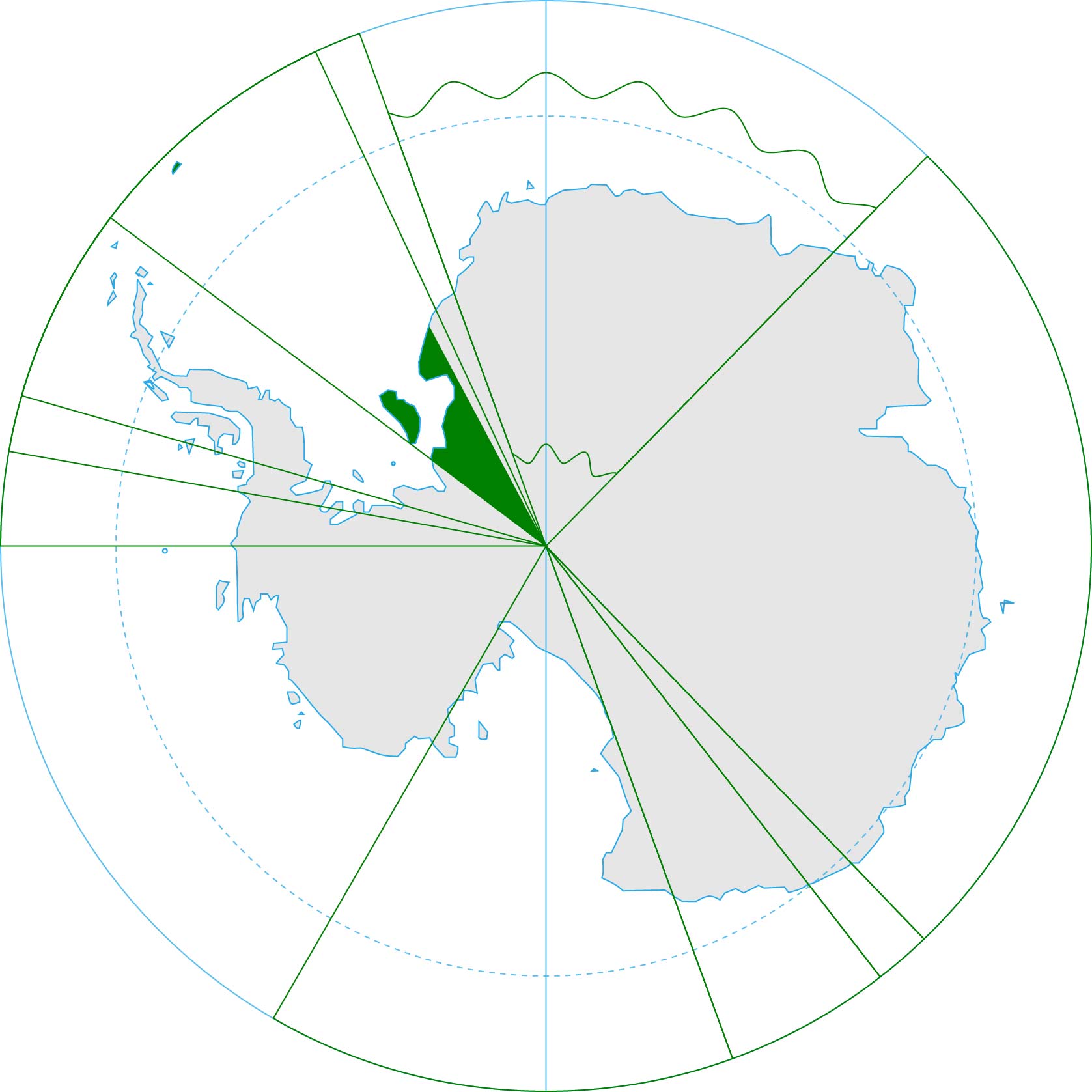Brazilian Antarctica
- Entries linking to the country Brazil redirect here.
Brazilian Antarctica is a hypothetical Antarctic territory south of 60°S and from 28°W to 53°W, proposed as "Zone of Interest" by Brazil. It exists completely within the British claim as well as the Argentine one.
Outside the zone of interest, Brazil maintains a permanent staffed research facility, the Comandante Ferraz Brazilian Antarctic Base (UN/LOCODE: AQ-CFZ), located in Admiralty Bay, King George Island, near the tip of the Antarctic Peninsula, at 62°08′S 58°40′W.
Frontage Theory
While the substance of the claim on the territory has never been precisely defined, it does not formally contradict these other claims geographically overlapping it.
Brazil formally expressed its reservations with respect to its territorial rights in Antarctica when it acceded to the Antarctic Treaty on 16 May 1975, making the first official mention of the "frontage theory", which states (simplistically):
that sovereignty over each point in Antarctica properly belongs to the first country whose non-Antarctic territory one would reach when traveling north in a straight line from such a point.
Comandante Ferraz Base
In January 1982 the Brazilian government launched their first Antarctic expedition after the the Brazilian Navy acquired the Danish icebreaker Thala Dan, later renamed Barão de Teffé. A year later the navy built its first Antarctic base (named "Comandante Ferraz," for a deceased naval officer active in Antarctica), which has been active year-round since then. Despite their status as newcomers, Brazilian geopolitical writers have had considerable influence on the nation's Antarctic policies, although there is not a national Brazilian Antarctic consciousness similar to that of Argentina.
In the early morning of February 25, 2012, with 60 people at the base, a fire started by an estimated unjustified explosion in the Praça das Máquinas, where the station's power generators are located. As it was linked to the rest of the facilities, the fire spread. A boatswain (Carlos Alberto Vieira Figueredo) and a first sergeant (Roberto Lopes dos Santos) were killed because they could not leave the site and a sergeant was injured but was taken alive to the Polish station where he received first aid and was later transferred to a Chilean base.
In 2020, Brazil opened a new research facility, 8 years after fire destroyed the previous one.
Scientific activities
Brazil maintains two research vessels that sail in the Antarctic waters, the icebreakers Almirante Maximiano and Ary Rongel). The Brazilian Navy and the Brazilian Air Force are responsible for the logistics of the Brazilian Antarctic Program, including the transport of military and civilian personnel, equipment, and supplies to Antarctica.
In 2009 Brazil made its first national scientific expedition to the Antarctic ice sheet. The expedition integrated atmospheric, glaciological, geological and geophysical studies along the Patriot Hills area and also along the subglacial lake Ellsworth area. A second expedition occurred in early November 2011, when researchers installed a monitoring station (advanced outpost) 500 kilometers (310 mi) from the Geographic South Pole and 2,600 km (1,600 mi) from the Comandante Ferraz Brazilian Antarctic Base (EACF).
Joint international expeditions
Starting in 2024, Brazil began participating in joint scientific operations in Antarctica with the Russian Antarctic Program. The project was organised by Russia's Arctic and Antarctic Research Institute and the Polar and Climate Centre of the Institute of Geosciences of the Federal University of Rio Grande do Sul.
The expedition team of 60 personnel from seven countries (Russia, Brazil, Argentina, Chile, Peru, India, and China) will spend two months in Antarctica to study various ecosystems found on the continent. They are utilizing the Russian icebreaker Akademik Tryoshnikov out of St. Petersburg.
Political visits
In February 1991, President Fernando Collor de Mello reaffirmed Brazil's interest in the region by visiting the Brazilian Antarctic base, where he spent three days. He was the first Brazilian president to set foot in the Antarctic.
In January 2008, 13 congress members of the Brazilian Antarctica Parliamentary Committee visited the Brazilian Antarctic base. Another visit by the members of Congress took place in January 2009.
On February 16, 2008, President Luiz Inácio Lula da Silva and a delegation of twenty-three people, including the First Lady Marisa Letícia, visited the country's base in Antarctica. The Brazilian Government defined the presidential trip as a "political gesture" in support of the work displayed by Brazilian scientists and military personnel.
